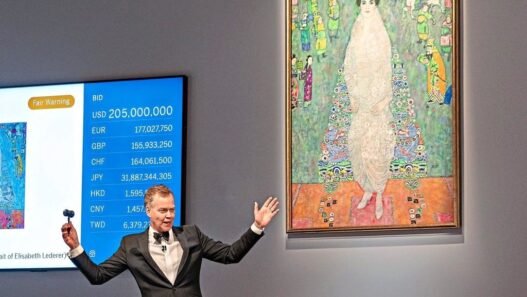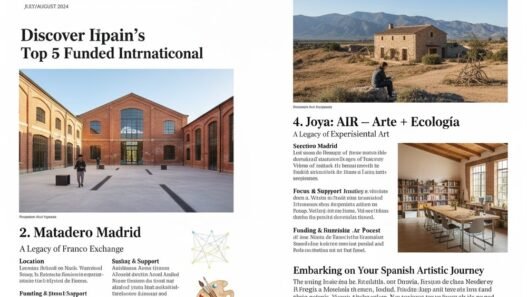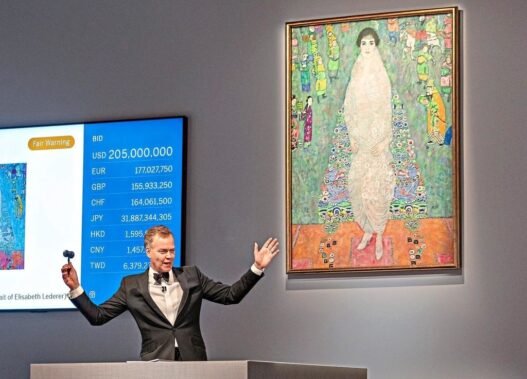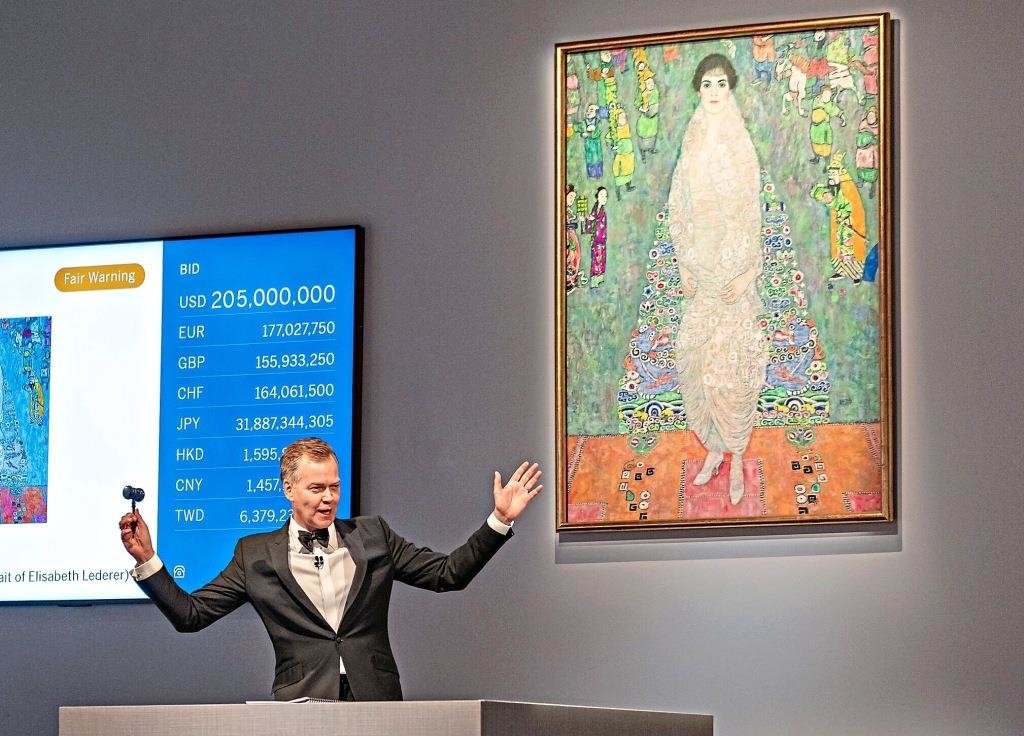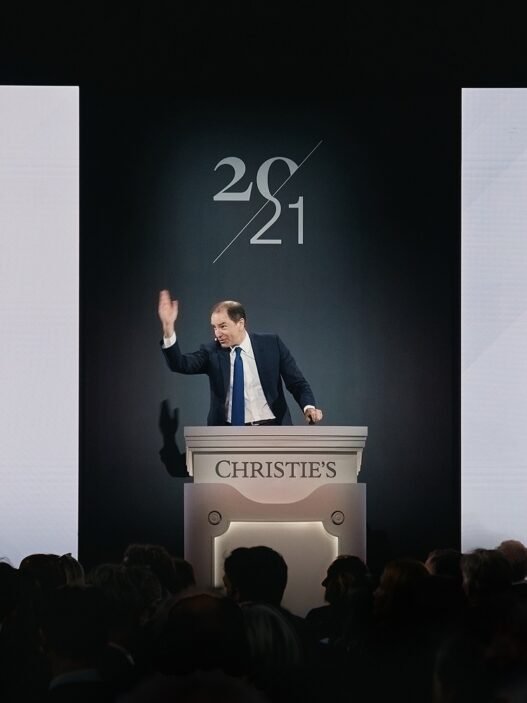Gustav Klimt’s Portrait of Elisabeth Lederer: The $236.4 Million Masterpiece That Redefined the Modern Art Market
On a crisp November evening in New York, the auction room at Sotheby’s fell into an electric silence. All eyes were fixed on a single canvas: Gustav Klimt’s Portrait of Elisabeth Lederer, shimmering under the auction house lights.
Nineteen intense minutes later, the gavel came down, $236.4 million.
Gasps, applause, disbelief. A new record.
This wasn’t just a sale. It was a moment that reshaped the upper reaches of the art market and reignited global fascination with one of art history’s most enigmatic painters.
A Masterpiece Born in a Transforming Vienna
Painted between 1914 and 1916, Portrait of Elisabeth Lederer emerges from Klimt’s late period, where ornamental luxury met psychological depth. Elisabeth, the elegant daughter of two of Klimt’s most significant patrons, stands enveloped in a shimmering dragon-embroidered silk robe.
Her expression is calm, but distant. Her body seems to hover between reality and an ornamental world of symbols, patterns, and floating figures.
This is Klimt at his artistic peak, merging:
- Japanese and Chinese textile influences
- Vienna Secession design principles
- Symbolist mysticism
- A psychological portrait of femininity and presence
Few artists in history could make a portrait feel like both a human encounter and a mythic vision. Klimt could. And this canvas is one of the finest examples of his transcendent visual language.
The Survival Story Behind the Painting
Beyond its visual allure, the painting carries a dramatic and emotional history, one that deeply shaped its value.
The Lederer family, prominent Jewish patrons of the arts, owned one of the greatest private Klimt collections in Vienna. When the Nazis rose to power, their holdings were seized. Several Klimt masterpieces did not survive the war, famously burning in a castle fire in 1945.
But Elisabeth Lederer miraculously did.
At the time, Elisabeth herself lived under threat. In a complicated and tragic twist of survival, she claimed that Klimt (an Austrian and non-Jew) was her biological father. With help from a Nazi official (who had once been her brother-in-law), she obtained falsified documents that protected her from persecution.
It was a lie that saved her life.
And indirectly saved the portrait.
After the war, the painting was returned to her family. Eventually, it entered the illustrious collection of Leonard A. Lauder, the Estée Lauder heir known for assembling museum-caliber art. Upon his death in 2025, the painting came to auction, for the first time in generations.
Its history is woven with resilience, loss, identity, and the moral complexities of survival under oppression. This story undeniably deepened the emotional and cultural weight behind the sale.
Why This Painting Commanded $236.4 Million
The staggering price was not a surprise to experts, but it was a landmark. Here is why:
1. Extreme Rarity of Full-Length Klimt Portraits
Klimt created only a small number of life-size female portraits. Most reside permanently in museums.
Pieces of this scale and quality almost never enter private markets.
2. Museum-Level Provenance
A clear, prestigious, and meticulously documented ownership history (from the Lederer family to Lauder) adds tremendous value and eliminates risk. Provenance certainty is everything in today’s market.
3. A Perfect Example of Klimt’s Signature Style
The gold, the symbolism, the ornamental richness, the sophistication, this is the Klimt collectors dream of owning.
It’s comparable in importance to Portrait of Adele Bloch-Bauer I, yet that work is not for sale at any price.
4. The Emotional Weight of a WWII Survival Story
Paintings with profound, human histories resonate strongly with collectors. This portrait is not just art, it is testimony.
5. The Market Power of Klimt
Klimt is one of the most desired names in 20th-century art. He appeals to:
- European connoisseurs
- American collectors
- Middle Eastern museums
- Asian new-wealth buyers
The global appetite for Klimt is exceptionally strong and growing.
6. Sotheby’s Strategic Staging
The auction took place in the newly transformed Sotheby’s Breuer Building, a symbolic cultural center in Manhattan. The sale had guarantees, private bidders, and a perfectly orchestrated marketing campaign.
When all forces align (rarity, narrative, aesthetics, and market desire) history is made.
A New Benchmark in the Art Market
This sale is more than a headline; it signals larger shifts:
- Modern art is achieving prices once reserved for Old Masters or postwar icons.
- Narrative-driven works are gaining prestige and value.
- Collectors are placing emotional and historical significance on equal footing with visual beauty.
- Klimt’s legacy continues to rise — and with it, Vienna’s Golden Age culture.
Only Leonardo da Vinci’s Salvator Mundi has ever sold for more.
What This Means for the Future of High-End Art Sales
For collectors and curators, the implications are clear:
- Masterpieces with strong provenance and complex histories will dominate top-tier auctions.
- Klimt is now firmly cemented as one of the most valuable artists of all time.
- Works from early 20th-century Vienna (especially Symbolism and Secession) are poised to surge.
- Institutions may accelerate acquisition strategies before prices escalate further.
This sale is likely to influence global museums, private collections, and even cultural diplomacy around Austrian art.
Artinfoland’s Reflection
At Artinfoland, we see this event as a powerful reminder of what art truly represents:
memory, identity, beauty, and survival.
Klimt’s Portrait of Elisabeth Lederer embodies all four.
Its $236.4 million price is not just a market achievement, it is a cultural acknowledgment of a life and lineage entwined with history’s darkest moments and art’s luminous resilience.
It is a painting that will be remembered, studied, and debated for decades. And for the art world, it marks a new chapter in understanding how stories shape value.


